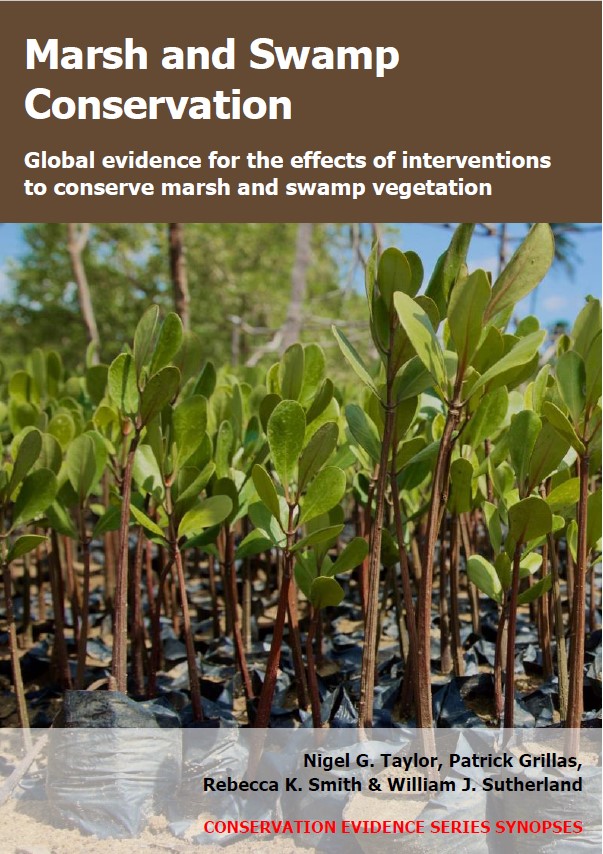Add lime or similar chemicals: freshwater marshes
-
Overall effectiveness category Unknown effectiveness (limited evidence)
-
Number of studies: 1
View assessment score
Hide assessment score
How is the evidence assessed?
-
Effectiveness
25% -
Certainty
20% -
Harms
0%
Study locations
Supporting evidence from individual studies
A replicated, controlled, before-and-after study in 1989–1991 of marsh vegetation around a lake in New York State, USA (Mackun et al. 1994) found that catchment liming had no significant effect on the absolute and relative abundance of most plant taxa. This was true for cover of 45 of 49 plant taxa, frequency of 48 of 49 taxa, and relative abundance of 48 of 49 taxa. Liming increased cover of one taxon, sawtooth sedge Cladium mariscus (before intervention: 1–2% cover; limed areas after two years: 6% cover; unlimed areas after two years: 1% cover). Liming reduced, or prevented increases in, cover of two taxa (sundew Drosera intermedia, bog muhly Muhlenbergia uniflora) and frequency of one (lesser St. John’s wort Hypericum canadense; see original paper for data). Cover of one taxon – inland sedge Carex interior – was low and stable in limed areas (before: 0.3%; two years after: 0.2%) but declined, albeit from much greater values, in unlimed areas (before: 1.4%; two years later: 0.3%). Methods: In October 1989, pelleted limestone was added by helicopter to two of five subcatchments around Woods Lake (1,100 Mg of limestone across 100 ha). The other three subcatchments were not limed. Plant taxa and their cover were surveyed in marshes around the lake, in summer before liming (1989) and for two years after (1990, 1991). “No significant effect” in this study means that differences or similarities between limed and unlimed subcatchments before intervention persisted after intervention. Surveys were completed in 50 permanent 1-m2 quadrats (21 in limed marshes; 29 in unlimed marshes). Substrate pH was 4.5 before liming, then 6.6 in limed areas and 5.0 in unlimed areas.
Study and other actions tested
Where has this evidence come from?
List of journals searched by synopsis
All the journals searched for all synopses
This Action forms part of the Action Synopsis:
Marsh and Swamp Conservation
Marsh and Swamp Conservation - Published 2021
Marsh and Swamp Synopsis





)_2023.JPG)














